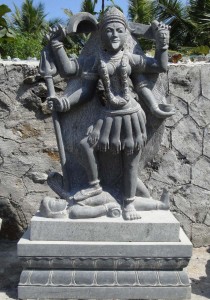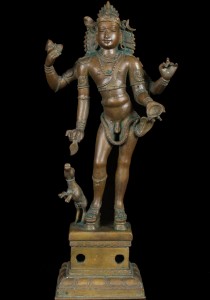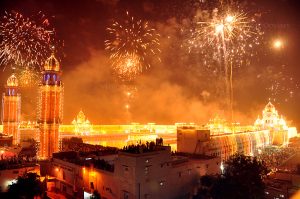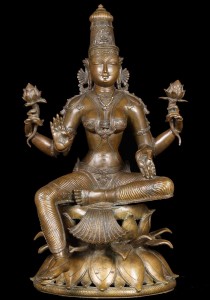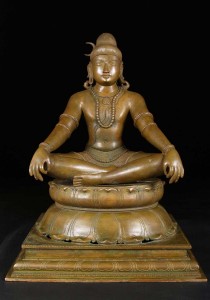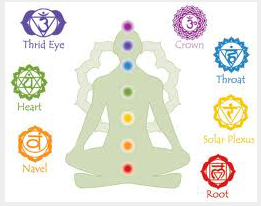
The word chakra is derived from Sanskrit, meaning “wheel”, or “circle of life”. They consist of seven main energy centers found in the body and is associated with a variety of colors, symbols and Hindu gods. In Hinduism, the continuous flow of energy throughout the chakras is referred to as “Shakti”. The concept of chakra was first mentioned in the ancient sacred Hindu text, The Vedas, but also plays an important role in Tibetan Buddhism.
Chakras are located along the spine and influence different nerve systems, organs and glands with their energy. These vortexes of energy are originated from Brahman, according to Hindu beliefs. It is presumed that as Shakti flows from one chakra point to another it exhausts the body and soul. The energy that becomes coiled in the base of the spine (root chakra) is called Kundalini. The spiritual goal is to awaken and release the Kundalini in order to attain a greater consciousness and merge it with the Infinite consciousness of Brahman. Through meditation and Kundalini yoga, the energy can pass back up the spine until it reaches the top of the head (crown chakra), producing a mystical experience.
“Kundalini yoga consists of active and passive asana-based kriyas, pranayama, and meditations which target the whole body system (nervous system, glands, mental faculties, and chakras) to develop awareness, consciousness and spiritual strength.” –Yogi Bhajan
Chakras & Colors:
1. Muladhara: The Root Chakra – located at base of the spine. Associated with red. It affects your confidence, trust in life and self-esteem. It is from here that our base instincts arise; the need to survive or the fight or flight reflex. Hindu God –Lord Ganesh and Brahman.
2. Swadhisthana: The Sacral Chakra – located below the navel. Associated with orange. It affects sexual desires, attractions and the need to procreate. Other emotions, such as, anger, fear and hatred stem from this chakra. Hindu God –Lord Vishnu
3. Manipura: The Solar Plexus Chakra – located at the bottom of the breast bone. Associated with bright yellow. It affects the lower back, digestive system, liver and gall bladder. Feelings that are associated with this chakra, include, determination, self-acceptance and will power. It is here that instinctual emotion translates to more complex emotions. Hindu God –Maharudra Shiva
4. Anahata: The Heart Chakra – located at the center of the chest. Associated with green. Feelings associated with this location are love, compassion, emotional security, forgiveness and loving kindness. Hindu God –Ishvara
5. Vishuddha: The Throat Chakra – located at the throat, over the larynx. Associated with blue. It is the source of our ability to communicate, and express creativity and individuality. Hindu God – Sadashiva
6. Ajna: The Third Eye Chakra – located at front of the head in between eye brows. Associated with indigo. The mind, as the sense organ and action organ are associated with this chakra. Feelings associated with this chakra are spirituality, awareness, and sense of time. Hindu God -Ardhanarishvara –an androgynous form of Hindu god Lord Shiva and Parvati, also known as Devi and Shakti
7. Sahasrara: The Crown Chakra – located at the top of the head. Associated with purple, or gold. It is from this chakra that all others emanate. It relates to pure consciousness. In Hindu literature, it is known as “the supreme center of contact with God.” Here liberated ones abide in communion with the Self. Hindu God – Lord Shiva
“Good for the body is the work of the body, good for the soul the work of the soul, and good for either the work of the other”. –Henry David Thoreau

